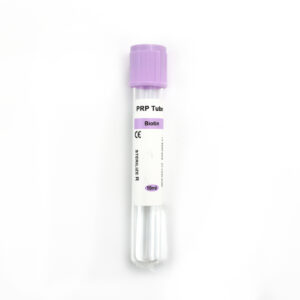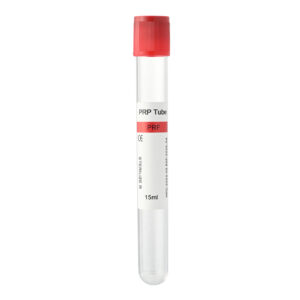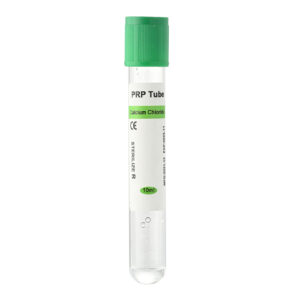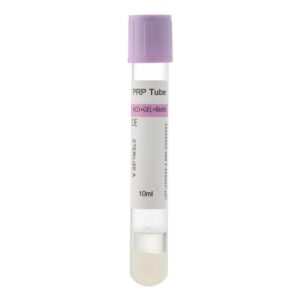A Sodium Citrate Anticoagulant Blood Collection Tube is a type of tube used for blood collection. This tube contains a sodium citrate solution that acts as an anticoagulant to prevent the collected blood from clotting.
Applications of Sodium Citrate Blood Collection Tube:
- Coagulation Function Testing:
- Prothrombin Time (PT): Evaluates the function of the extrinsic coagulation system.
- Activated Partial Thromboplastin Time (aPTT): Assesses the function of the intrinsic coagulation system.
- Fibrinogen Testing: Measures the concentration of fibrinogen in plasma, assessing bleeding and thrombosis risks.
- D-Dimer Testing: Helps diagnose thrombotic diseases such as Deep Vein Thrombosis (DVT) and Pulmonary Embolism (PE).
- Blood Preservation and Transportation:
- Preservation of Blood Samples: Sodium citrate anticoagulant blood collection tubes can preserve blood samples, keeping them liquid for subsequent biochemical and immunological tests.
- Transportation of Blood Samples: When samples need to be transported from the collection site to the laboratory for analysis, these tubes ensure that the blood samples do not clot during transportation.
- Pre-Transfusion Testing:
- Blood Typing: Blood typing must be performed before transfusions to ensure compatibility between donor and recipient.
- Cross-Matching Tests: Ensures compatibility between donor and recipient blood, preventing transfusion reactions.
- Diagnosis and Monitoring of Blood Diseases:
- Hemophilia: Helps diagnose and monitor treatment efficacy in hemophilia patients through coagulation function testing.
- Coagulation Disorders: Used to diagnose various coagulation disorders, such as platelet function disorders and coagulation factor deficiencies.
- Surgical Procedures and Critical Care:
- Preoperative Evaluation: Coagulation function testing before surgery to assess surgical risks and develop appropriate surgical plans.
- Postoperative Monitoring: Monitoring a patient’s coagulation function after surgery to ensure the safety of the recovery process.
Advantages of Sodium Citrate Blood Collection Tube:
- Effective Anticoagulation: Sodium citrate chelates calcium ions in the blood, preventing the coagulation process and ensuring that collected blood samples remain liquid, suitable for various coagulation function tests.
- Efficient Blood Sample Preservation: Sodium citrate anticoagulant blood collection tubes can maintain the stability of blood samples for an extended period, facilitating sample preservation and transportation, and ensuring samples remain valid for laboratory analysis.
- Wide Application Range: Suitable for various coagulation function tests, such as PT, aPTT, fibrinogen testing, and D-dimer testing, meeting the needs of clinical and laboratory settings for different testing items.
- High Safety: Sodium citrate as an anticoagulant is non-toxic to the human body, making it highly safe for blood collection from various patients, including those sensitive to drugs and chemicals.
- Ease of Operation: Using sodium citrate anticoagulant blood collection tubes for blood collection is simple, reducing the operational difficulty and time for medical personnel, and improving work efficiency.
- Reduced Interference: Sodium citrate anticoagulant has minimal interference with many testing items, helping to obtain accurate and reliable test results, and enhancing testing accuracy.
- Cost-Effective: The manufacturing cost of sodium citrate anticoagulant blood collection tubes is relatively low, and their convenience in preservation and transportation reduces overall costs, improving cost-effectiveness.
- Standardization and Consistency: Sodium citrate anticoagulant blood collection tubes undergo strict quality control during production, ensuring consistent anticoagulant concentration in each tube, and guaranteeing consistency and repeatability of test results.
Extraction Method of Sodium Citrate Blood Collection Tube:
The extraction method for Sodium Citrate PPR tubes includes the following steps to ensure the quality and effectiveness of the collected blood samples when using sodium citrate as an anticoagulant.
- Preparation
- Materials: Ensure the use of sterilized sodium citrate anticoagulant blood collection tubes. The tubes usually pre-contain an appropriate amount of sodium citrate solution (common concentrations are 3.2% or 3.8%).
- Sterilization Tools: Prepare sterile blood collection needles, tourniquets, alcohol swabs, etc.
- Blood Collection Steps
- Patient Preparation:
- Have the patient relax and choose a suitable blood collection site (usually a forearm vein).
- Tighten a tourniquet approximately 5-10 cm above the collection site to highlight the vein.
- Disinfect Skin:
- Use an alcohol swab to disinfect the collection site, and proceed with blood collection once the skin is dry.
- Blood Collection:
- Insert a sterile blood collection needle into the vein and connect the Sodium Citrate PPR tube to the needle.
- Gently push the tube to allow blood to flow until the specified mark. Typically, the ratio of sodium citrate solution to blood is 1:9, meaning 9 parts blood to 1 part anticoagulant.
- Mixing:
- After blood collection, immediately remove the tube from the needle and gently invert the tube 5-10 times to ensure thorough mixing of blood with the sodium citrate anticoagulant, preventing coagulation.
- Patient Preparation:
- Processing and Preservation
- Labeling:
- Label the collection tube with patient information, including collection time and test items.
- Preservation and Transportation:
- Place the collected blood samples under appropriate temperature conditions (usually room temperature or refrigerated) and deliver them to the laboratory for testing within the specified time.
- Labeling:
- Precautions
- Avoid Hemolysis: Ensure smooth operation during blood collection to avoid violently shaking the tube, preventing red blood cell rupture and hemolysis.
- Prevent Contamination: Maintain sterility during the procedure, avoiding contact with the needle and tube mouth with non-sterile items.
- Accurate Blood Volume: Ensure the collected blood volume meets the anticoagulant ratio requirements to avoid affecting test results.





